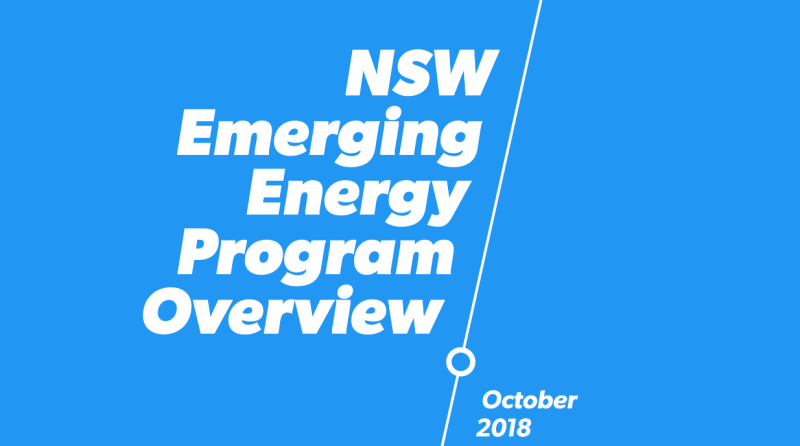
The NSW Government announced its Emerging Energy program yesterday that will support commercialisation of new, large‑scale, electricity projects in the state using emerging, dispatchable technology.
The program was launched at a briefing yesterday, which according to New South Wales Minister for Resources, Energy and Utilities Don Harwin was well attended.
“Great to see so much private sector interest in partnering with the NSW Government to help our state transition to a modern energy future,” he tweeted.
New South Wales was graded a “C” on the Climate Council’s recently published State and Territory Renewable Energy Scorecard 2018 – but perhaps the coming years might see its grades improve, partly as result of this $55 million initiative.
The program has been spurred on by the transition of NSW’s energy sector, with more renewables based generation entering the system and ageing coal-fired clunkers such as Liddell Power Station scheduled for the scrapheap.
$55 million may not be a huge amount considering the task at hand, but Emerging Energy has been seen by some as a step in the right direction – maybe.
Solar Citizens cautiously welcomed the announcement.
“So far this program seems positive, however as more details emerge, it will be disappointing if this scheme funnels money into expensive gas generation,” said Solar Citizens National Director Joseph Scales. “NSW has world-class solar and wind resources – tapping into these could provide more energy than all of the state’s coal and gas reserves combined.”
The concern about gas getting too much attention is valid. The emissions intensity maximum limit for electricity generation projects is 0.5 tonnes of carbon dioxide equivalent per megawatt hour; giving gas a look-in. On the bright side, it would seem to lock out all types of coal, including so-called ultra-supercritical high efficiency low emissions (HELE) coal plants (around 0 .67 – 0 .74 tonnes CO2/MWh).
Defining Emerging And Dispatchable
To qualify as “emerging” technology, projects will need to have be employed at full-scale and must have been previously operated across all expected operating conditions. Furthermore, the technology must have been tested commercially, but not yet considered “bankable” or a mature commercial technology – so any gas projects will need a twist.
As for “dispatchable”, this is defined as technology with the ability to change output/load in response to one or more wholesale energy or ancillary service price signals in the National Electricity Market (NEM) – for example, some solar + storage projects would be considered dispatchable.
Here’s the promo video:
Funding available under the scheme is anticipated to be up to $10 million per project – and beneficiaries are expected to at least match grants dollar-for-dollar. $500,000 in funding for pre-investment studies (per project) is also envisioned, again with matching contributions from project proponents.
All projects to receive support must be at least 5MW capacity and connected to the NSW region of the NEM.
The NSW Department of Planning and Environment says it expects to open registrations and a call for Expressions of Interest in the first quarter of 2019, at which time further details will be available.

 RSS - Posts
RSS - Posts



Speak Your Mind